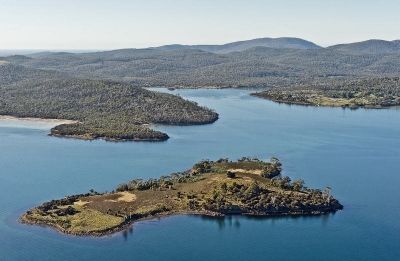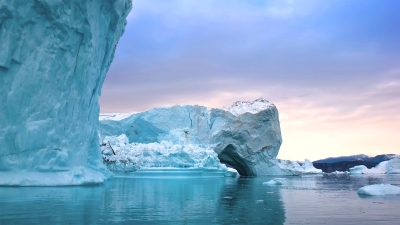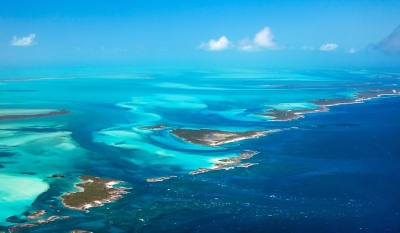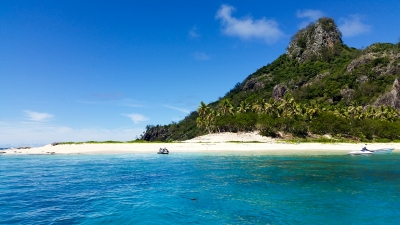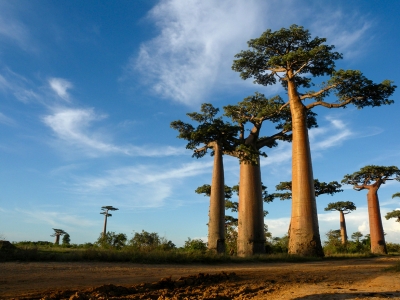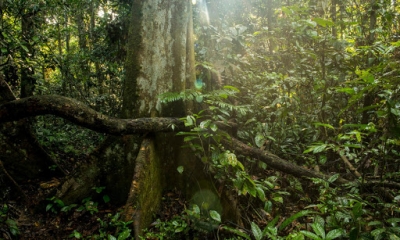
Declared a UNESCO World Heritage Site in 2004, the tropical rainforest regions in Indonesia's Sumatra Island comprise three national parks, namely Gunung Leuser National Park, Kerinci Seblat National Park, and Bukit Barisan Selatan National Park. Spread across more than 25,000 sq.km. a portion of the area falls within Sumatra's Leuser ecosystem that's often described as "the last place on Earth where tigers, rhinos, orangutans and elephants still live together".
The Parks, which are located on the spine of Bukit Barisan Mountains of Sumatra, show amazing uniqueness in biodiveristy, and are home to 10,000 species of plants. The regions also show a stunning variety in ecosystem from lowland rainforest to montane forest and subalpine low forest to scrub and shrub vegetation. The Gunung Leuser National Park is the place to see both the world's largest flower (Rafflesia arnoldi) and the tallest flower (Amorphophallus titanum).
Wildlife
The area is said to nurture more than 500 species of birds. Ducks, geese, partridges, scrubfowls, pheasants, grebes, pigeons, doves, quails, cuckoos, coucals, malkohas, koels, frogmouths, nightjars, swifts, swiftlets, needletails, rails, waterhens, crakes, thickknees, stilts, plovers, lapwings, snipes, jacanas, sandpipers, pratincoles, gulls, terns, petrels, shearwaters, storks, frigatebirds, tropicbirds, boobies, darters, cormorants, pelicans, herons, bitterns, egrets, ibises, kites, buzzards, eagles, owls, harriers, trogons, hornbills, kingfishers, bee-eaters, rollers, woodpeckers, barbets, kestrels, falcons, parakeets, broadbills, pittas, ioras, minivets, shrikes, orioles, drongos, fantails, flycatchers, magpies, swallows, bulbuls, warblers, tailorbirds, white eyes, babblers, thrushes, mynas, starlings, leafbirds, flowerpeckers, sunbirds, spiderhunters, wagtails, weavers, munias, and finches are among the birds that can be spotted in the region. The place also supports more than 200 mammal species, including several that are endemic and endangered. The mammals include the endemic Sumatran orangutan, the Sumatran tiger, dlouded leopard, rhinoceros, elephant, and the Malayan sun bear.
Threats
- Given the expansive wealth of natural resources in the region, Sumatra has attracted heavy international financing zeroing in on extractive industries, "from precious hardwoods and minerals to palm oil, rubber, and coal". As a result, the precious wildlife in the area is losing their habitats and faces a very bleak future.
- Road development in the rainforests is of great concern because they not just destroy the natural landscape and displace wildlife, but also provide access to people for illegal logging, encroachment, and poaching.
- Agriculture is another cause of worry. As rainforests are wiped off to give way for agriculture, it becomes difficult to reclaim the lost forest area. In fact, a study less than a decade ago had said that the rainforests of Sumatra are likely to disappear in 20 years. So, right now, we have perhaps about 10 years to save the rainforests. This would also mean the eventual, permanent disappearance of some of the rarest wildlife species on the planet.
- In 2011, the UNSECO placed the region under its List of World Heritage in Danger. Mining, encroachment, development activities, and, to a certain extent, invasive species are among the several threats to the rainforests in Sumatra listed by it.
Picture Credit : Google
